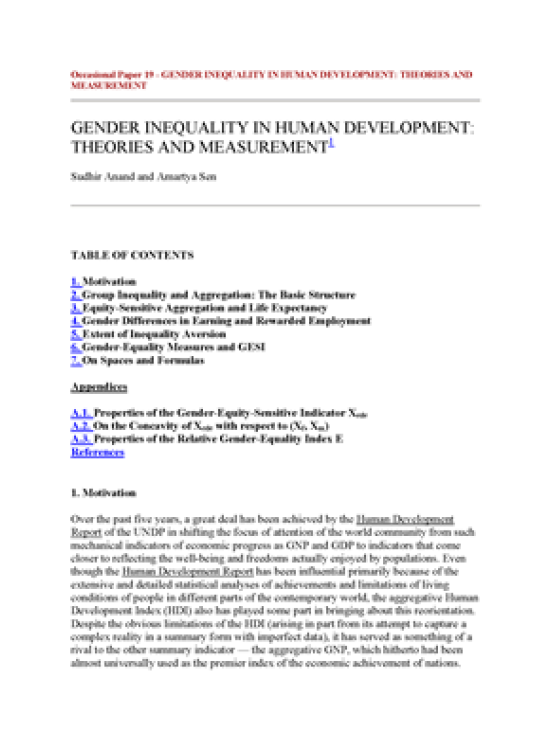Gender Inequality in Human Development
Theories and Measurement

Download Report by Language
Document
sudhiranandamartyasen.pdf
(68.48 KB)
Citation
Anand, Sudhir, Sen, Amartya. 1995. Gender Inequality in Human Development: Theories and Measurement. New York.
Gender Inequality in Human Development
Theories and Measurement
Posted on: January 01, 1995
Over the past five years, a great deal has been achieved by the Human Development Report of the UNDP in shifting the focus of attention of the world community from such mechanical indicators of economic progress as GNP and GDP to indicators that come closer to reflecting the well-being and freedoms actually enjoyed by populations. Even though the Human Development Report has been influential primarily because of the extensive and detailed statistical analyses of achievements and limitations of living conditions of people in different parts of the contemporary world, the aggregative Human Development Index (HDI) also has played some part in bringing about this reorientation. Despite the obvious limitations of the HDI (arising in part from its attempt to capture a complex reality in a summary form with imperfect data), it has served as something of a rival to the other summary indicator — the aggregative GNP, which hitherto had been almost universally used as the premier index of the economic achievement of nations. The HDI has clearly been able to present some aspects of human development that the GNP tends to miss.

